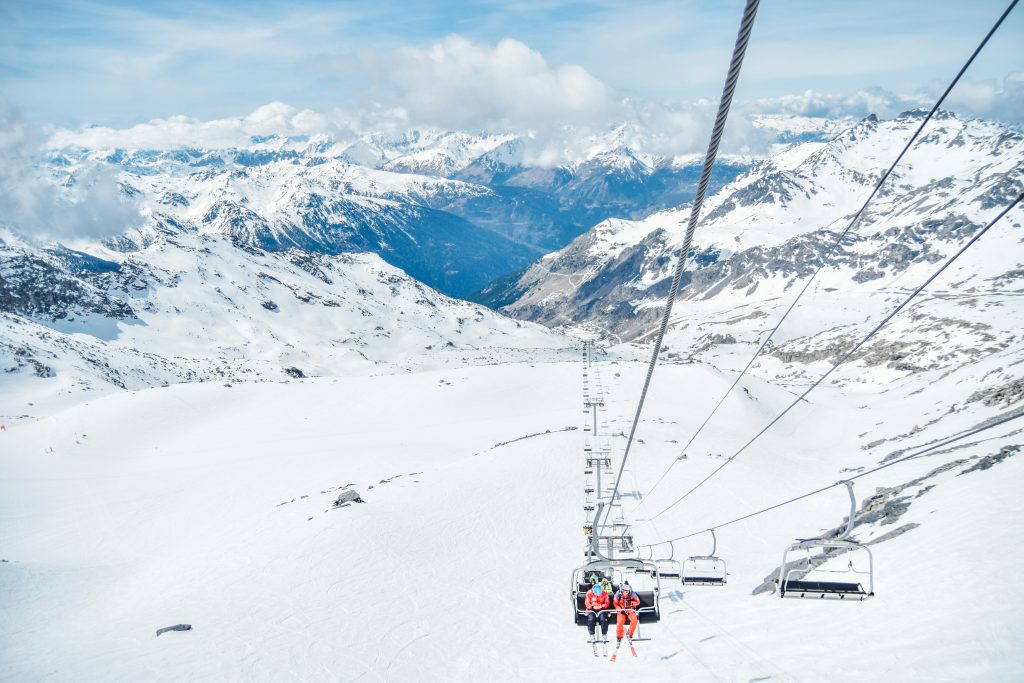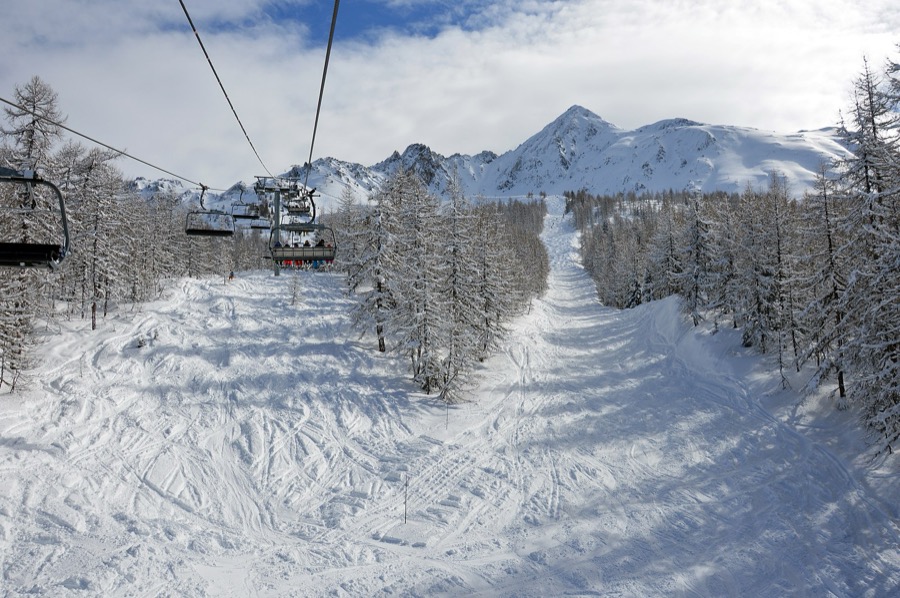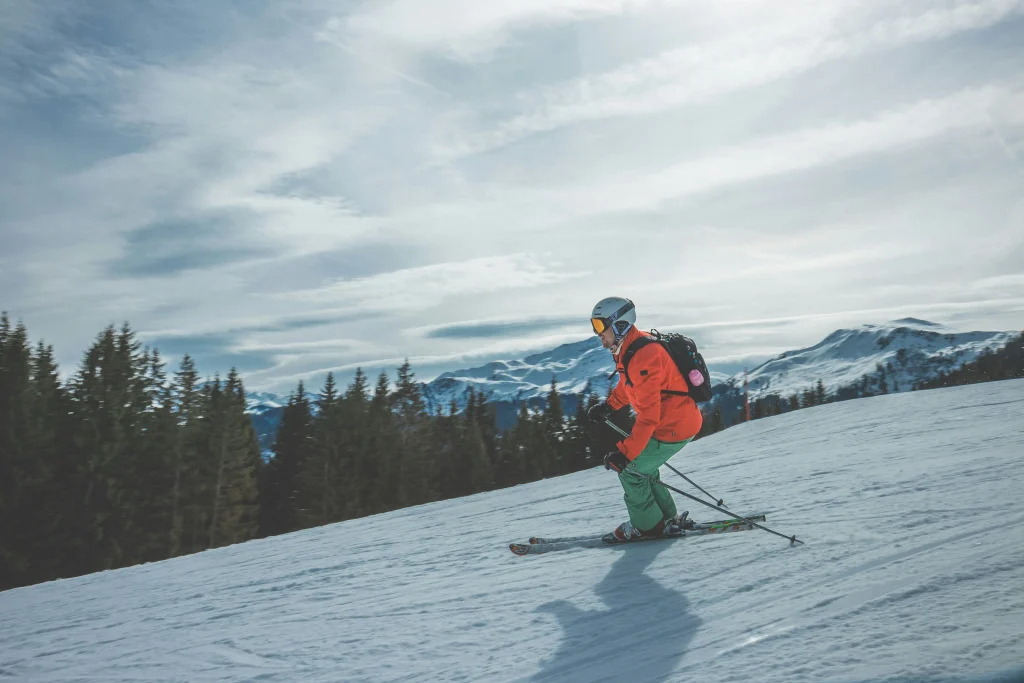Much like late-season skiing, or spring skiing, as it is commonly known, early-season skiing can be a great opportunity to avoid the crowds and high prices that come with peak holiday weeks. If you are thinking of hitting the slopes in December, this blog is for you. We’ve rounded up the pros and cons of an early-season ski trip and answered frequently asked questions about skiing in December so that you can make an informed choice when it comes to planning and booking your early-season ski trip.
What is Considered Early-Season Skiing in Europe?
Most resorts in Europe open in late November or early December. However, some resorts open as early as October for glacier skiing. So, an autumn ski trip is not off the cards! Check out our resort opening dates blog for up-to-date information on the opening and closing dates of popular ski resorts across Europe. Early-season skiing typically refers to the very start of the season up until the end of December when the temperature drops considerably and the crowds start flocking in for the holidays.
Pros of Early-Season Skiing in December:

Fewer Crowds
One of the biggest perks of an early-season ski trip in December is the lack of crowds. Timing your trip before the Christmas holidays means the resort will be considerably quieter, so there will be fewer people to dodge on the slopes and shorter lift queues, if any! This is great for those who enjoy untouched snow and for beginner skiers looking to build confidence on quiet runs. You may even get lucky and have a whole run to yourself! Outside of the school holidays, there will also be less children on the slopes to dodge and with fewer people in the resort you will have a higher chance of securing a table at popular restaurants and après ski spots!
Cheaper Prices
Another big benefit of booking an early-season ski trip in December is the low prices! The start of the season is one of the cheapest times of year to go skiing. Many resorts offer discounted prices on lift passes and accommodation early in the season to attract visitors, so travelling in the early season is a great way to save money on your ski trip. You can also find great deals on ski lessons in the early season, with many of our instructors offering cheaper prices in off-peak weeks. Along with cheaper prices, you will benefit from a wider selection of accommodation options and ski instructors to choose from thanks to lower demand, so you can get the pick of the bunch!
Opening and Pre-Holiday Festivities
On an early-season ski trip, you’ll feel a vibrant atmosphere in the resort as excitement builds with the start of the ski season and in the festive lead-up to Christmas. December brings a variety of events, from ski resort opening parties and torch-lit ski descents to dazzling Christmas light displays and other pre-holiday celebrations. Resorts will be beautifully decorated and the holiday spirit will be in full swing! It’s the perfect chance to enjoy the magic of Christmas twice – once in the mountains and again at home. If you want to experience Christmas festivities on your ski trip, read our blog on the best resorts to visit around Christmas time.
Milder Temperatures
For those that struggle with the cold, skiing in the early season offers milder temperatures, with the average temperature in the European Alps typically ranging from -3°C to 5°C degrees in December. It gets considerably colder in January, with temperatures often dropping below -10°C. Milder temperatures allow you to ski comfortably for longer without the risk of numb toes and mean you won’t have to pack as many layers. The milder temperatures at the start of the season are particularly great for families with young children or for beginner skiers who are likely to spend less time moving while they learn the basics and watch demonstrations. It’s also great for trying other snow sports activities such as snowshoeing and cross-country skiing.
Cons of Early-Season Skiing in December:

Less Daylight (Shorter Days)
Early in the season, the days are shorter, meaning fewer hours of sunlight. This can reduce the amount of time you have to ski each day. In December the sun sets at around 4 pm and lifts typically close from between 3.30 pm to 4 pm. Despite your day not being quite as long as it would be later in the season, you only lose around 1 hour of daylight, so you will still be able to get a good day of skiing in! With earlier sunsets, there will also be less time to enjoy après ski with a backdrop of mountains and blue skies. But don’t worry, the party atmosphere doesn’t stop when the sun goes in!
Not All Resorts Will Be Open
Resorts at lower altitudes often don’t open until later in December when snow conditions are more reliable. However, despite not all resorts being open there are still several snow-sure ski resorts across the Alps to choose from, that offer excellent skiing from as early as October – you just need to know where to go! Choosing high-altitude resorts with glaciers is a great idea if you want reliable early-season snow. Check out our blog on the best European ski resorts to visit in December, for our top picks!
Less of an Atmosphere at Après Ski
While fewer crowds in the early season can have many benefits, especially on the slopes, you are unlikely to have the wild après ski experience that you may enjoy during the peak season in December. An early-season ski trip may well lack the lively après ski scene that comes with the crowds, but there will be more space for dancing and smaller queues for the bar, so that’s a plus! If you are looking for a buzzy après ski scene in the early season, choose a resort that is well-known for its après ski, where the bars draw in crowds all season long!
Unpredictable Snow Conditions
Early-season weather can be unpredictable, ranging from warm days that can melt snow to freezing temperatures that may ice over the slopes. At the start of the season in December, there is a thinner snowpack, so early-season snow conditions can be inconsistent. Snow can be patchy or icy, especially at lower altitudes where temperatures are milder. This means that resorts may have to rely on artificial snow-making to ensure good skiing conditions. However, many resorts have excellent facilities in place to achieve this. Snow storms can also occur in the early season, so be prepared for all conditions!
Should You Book an Early-Season Ski Trip in 2024?
2024 could be a great year for an early-season ski trip. As a result of the La Niña climate pattern, Europe will likely experience colder weather this winter than last year, which is great news for your winter holiday to the mountains! In September, some of the coldest temperatures on record were recorded in the Alps and high-altitude resorts have already seen plenty of Autumnal snow, so it’s looking good for a ski trip in December!

Additional Early-Season Skiing FAQs
1. Is early-season skiing safe?
Yes, early-season skiing is safe, but there are a few precautions to keep in mind. Since natural snow coverage may be thinner in December, hidden obstacles like rocks, tree stumps and bare patches can pose a risk. It’s important to stay on open, groomed trails, follow resort guidelines and be aware of conditions.
2. Are ski lessons cheaper in the early season?
Yes, ski lessons can be cheaper during the early season in December. Many instructors offer discounted rates on lessons during this less busy time. Smaller crowds also mean you may get more personalised attention from instructors, making the early season a good time to learn or improve your skills.
3. Can beginners enjoy early-season skiing?
Yes, beginners can definitely enjoy early-season skiing in December. Early in the season, resorts often focus on maintaining beginner-friendly slopes. With quieter slopes, beginners can practise without the pressure of large crowds.
4. Is early-season skiing good for families?
Yes, early-season skiing is great for families. Resorts are less crowded, making the experience more relaxed for families with children. Many family-friendly events, like Christmas light shows and holiday festivities, take place in December. Additionally, the lower cost of accommodation and lift tickets can make an early-season trip more affordable for families.
5. Are lift passes cheaper during the early season?
Yes, lift passes are often cheaper in the early season. Many ski resorts offer discounted lift passes to attract visitors before peak season in December. These discounts can make early-season skiing more budget-friendly, especially at popular resorts where prices may increase during the holidays and mid-winter.
6. Are snow storms common in the early season?
Snow storms can occur in the early season, but they are less frequent in December than in mid-winter. Early-season weather can be unpredictable, with varying amounts of snow depending on the region and altitude. Some areas might see heavy snowfall, while others may rely more on artificial snow until later in the season.
7. Is it necessary to book in advance for early-season skiing?
While early-season skiing is less crowded than peak times, it’s still a good idea to book accommodation, lift passes and lessons in advance to take advantage of early-bird discounts and ensure availability. Popular resorts may still attract visitors in December, especially around holiday weekends or special events.
8. Will all resort amenities be open in early season?
While most amenities and services are typically open in December, certain restaurants, shops, or off-slope activities may not be fully operational until peak season. Always check with the resort for specifics on what will be available during your stay.
9. How crowded are resorts during early-season weekends?
Weekends can still bring more visitors to resorts during the early season in December, especially if there are special events or good snow conditions. However, early-season weekdays are usually very quiet, making them ideal if you prefer fewer crowds and more relaxed skiing.
10. What clothing should I pack for early-season skiing?
Early-season weather can be unpredictable, ranging from mild to very cold conditions. Pack layers, including moisture-wicking base layers, mid-layers for warmth and a waterproof outer layer. A good pair of gloves, a warm hat, and neck protection like a buff or scarf are also important to stay comfortable on the slopes. Sunglasses or goggles are essential for sun glare or snow.